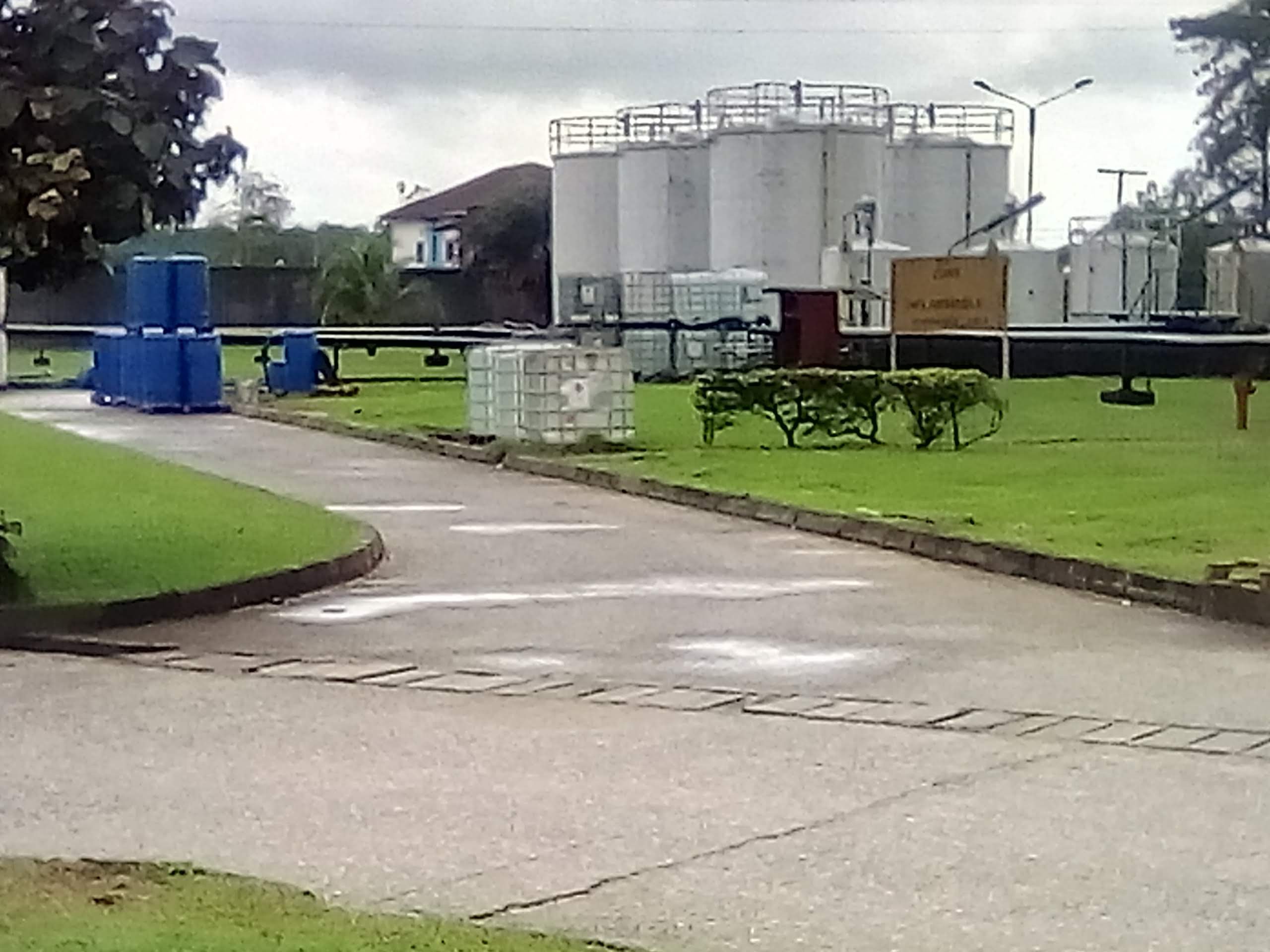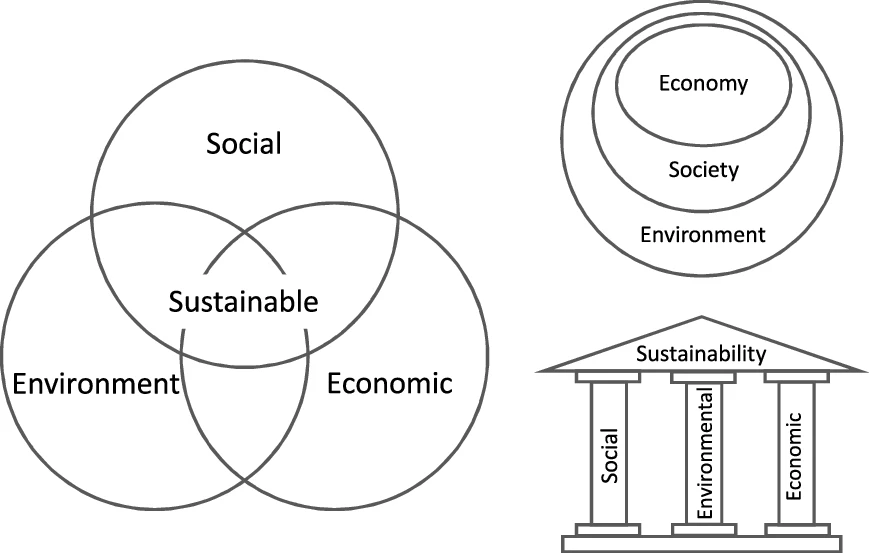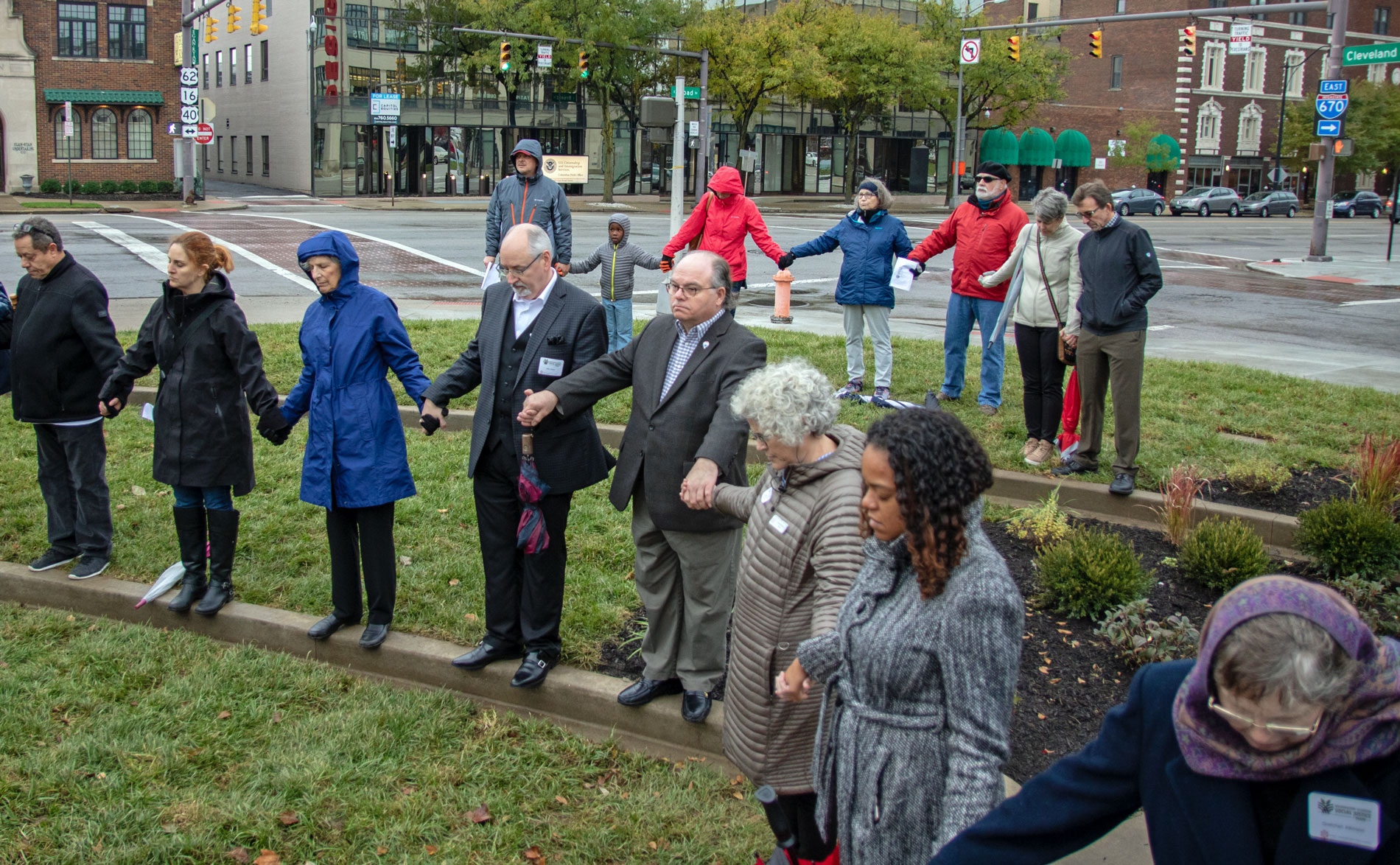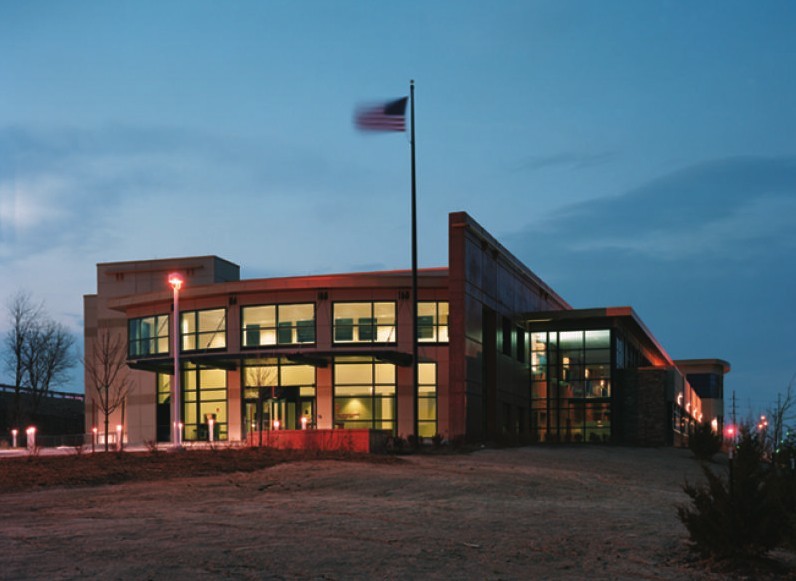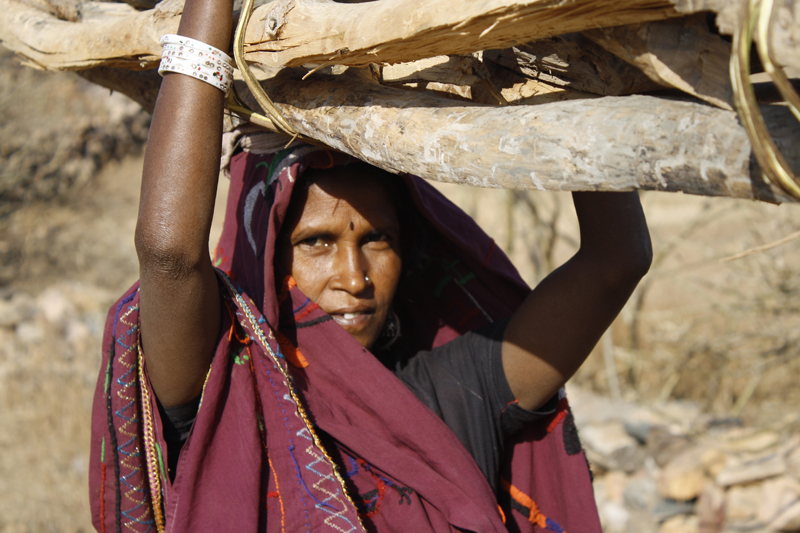|
Sustainable Industries
The phrase sustainable industries is related to the development of industrial processes in a sustainable way. The phrase refers to greening of energy intensive industries such as the textiles, steel, cement, and paper industries. Origin Sustainability is a social goal for individuals to co-exist on the Earth including economic, social, and environmental dimensions. A Sustainable industry would allow for growth in all three deminsions while maintaining the quality of the environment and countering major environmental issues. A report was released in 1987 by the United Nations called Our Common Future in which the concept of sustainable development was listed for the first time along with its guiding principles. Then, there is a mention of the phrase "sustainable industries" appeared in 1990 in a story about a Japanese group reforesting a tropical forest to help create sustainable industries for the local populace. Soon after, a study entitled “Jobs in a Sustainable Economy ... [...More Info...] [...Related Items...] OR: [Wikipedia] [Google] [Baidu] |
Sustainability
Sustainability is a social goal for people to co-exist on Earth over a long period of time. Definitions of this term are disputed and have varied with literature, context, and time. Sustainability usually has three dimensions (or pillars): environmental, economic, and social. Many definitions emphasize the environmental dimension. This can include addressing key environmental problems, including climate change and biodiversity loss. The idea of sustainability can guide decisions at the global, national, organizational, and individual levels. A related concept is that of sustainable development, and the terms are often used to mean the same thing. UNESCO distinguishes the two like this: "''Sustainability'' is often thought of as a long-term goal (i.e. a more sustainable world), while ''sustainable development'' refers to the many processes and pathways to achieve it." Details around the economic dimension of sustainability are controversial. Scholars have discussed this under ... [...More Info...] [...Related Items...] OR: [Wikipedia] [Google] [Baidu] |
Earth Summit
The United Nations Conference on Environment and Development (UNCED), also known as the Rio de Janeiro Conference or the Earth Summit (Portuguese: ECO92, Cúpula da Terra), was a major United Nations conference held in Rio de Janeiro from 3 to 14 June 1992. The 1972 United Nations Conference on the Human Environment (UNCHE) or the Stockholm Conference, was the first global conference to address environmental issues. It took place in Stockholm, Sweden from June 5–16, 1972. Earth Summit was created as a means for member states to cooperate together internationally on development issues after the Cold War. Due to issues relating to sustainability being too big for individual member states to handle, Earth Summit was held as a platform for other member states to collaborate. A key achievement of the 1992 conference was the establishment of the United Nations Framework Convention on Climate Change (UNFCCC) established in part as an international environmental treaty to comba ... [...More Info...] [...Related Items...] OR: [Wikipedia] [Google] [Baidu] |
Green Infrastructure
Green infrastructure or blue-green infrastructure refers to a network that provides the “ingredients” for solving urban and climatic challenges by building with nature.Hiltrud Pötz & Pierre Bleuze (2011). Urban green-blue grids for sustainable and dynamic cities. Delft: Coop for life. . The main components of this approach include stormwater management, climate adaptation, the reduction of heat stress, increasing biodiversity, food production, better air quality, sustainable energy production, clean water, and soil health, healthy soils, as well as more human centered functions, such as increased quality of life through recreation and the provision of shade and shelter in and around towns and cities. Green infrastructure also serves to provide an ecological framework for social, economic, and environmental health of the surroundings. More recently scholars and activists have also called for green infrastructure that promotes social inclusion and equity rather than reinforcin ... [...More Info...] [...Related Items...] OR: [Wikipedia] [Google] [Baidu] |
Sustainability
Sustainability is a social goal for people to co-exist on Earth over a long period of time. Definitions of this term are disputed and have varied with literature, context, and time. Sustainability usually has three dimensions (or pillars): environmental, economic, and social. Many definitions emphasize the environmental dimension. This can include addressing key environmental problems, including climate change and biodiversity loss. The idea of sustainability can guide decisions at the global, national, organizational, and individual levels. A related concept is that of sustainable development, and the terms are often used to mean the same thing. UNESCO distinguishes the two like this: "''Sustainability'' is often thought of as a long-term goal (i.e. a more sustainable world), while ''sustainable development'' refers to the many processes and pathways to achieve it." Details around the economic dimension of sustainability are controversial. Scholars have discussed this under ... [...More Info...] [...Related Items...] OR: [Wikipedia] [Google] [Baidu] |
Renewable Energy Industry
The renewable-energy industry is the part of the energy industry focusing on new and appropriate renewable energy technologies. Investors worldwide are increasingly paying greater attention to this emerging industry. In many cases, this has translated into rapid renewable energy commercialization and considerable industry expansion. The wind power, solar power and hydroelectric power industries provide good examples of this. In 2020, the global renewable energy market was valued at $881.7 billion and consumption grew 2.9 EJ. China was the largest contributor to renewable growth, accounting an increment of 1.0 EJ in consumption, followed by the US, Japan, the United Kingdom, India, and Germany. In Europe, renewable consumption incremented 0.7 EJ. Overview Net-zero and 100% renewable energy global goals create market opportunities for renewable industries such as solar and wind energy and lithium-ion batteries. By 2050, it’s estimated that the renewable market will reach a v ... [...More Info...] [...Related Items...] OR: [Wikipedia] [Google] [Baidu] |
Environmental Sustainability
Sustainability is a social goal for people to co-exist on Earth over a long period of time. Definitions of this term are disputed and have varied with literature, context, and time. Sustainability usually has three dimensions (or pillars): environmental, economic, and social. Many definitions emphasize the environmental dimension. This can include addressing key environmental issues, environmental problems, including climate change and biodiversity loss. The idea of sustainability can guide decisions at the global, national, organizational, and individual levels. A related concept is that of sustainable development, and the terms are often used to mean the same thing. UNESCO distinguishes the two like this: "''Sustainability'' is often thought of as a long-term goal (i.e. a more sustainable world), while ''sustainable development'' refers to the many processes and pathways to achieve it." Details around the economic dimension of sustainability are controversial. Scholars have d ... [...More Info...] [...Related Items...] OR: [Wikipedia] [Google] [Baidu] |
Green Consumption
Green is the color between cyan and yellow on the visible spectrum. It is evoked by light which has a dominant wavelength of roughly 495570 nm. In subtractive color systems, used in painting and color printing, it is created by a combination of yellow and cyan; in the RGB color model, used on television and computer screens, it is one of the additive primary colors, along with red and blue, which are mixed in different combinations to create all other colors. By far the largest contributor to green in nature is chlorophyll, the chemical by which plants photosynthesize and convert sunlight into chemical energy. Many creatures have adapted to their green environments by taking on a green hue themselves as camouflage. Several minerals have a green color, including the emerald, which is colored green by its chromium content. During post-classical and early modern Europe, green was the color commonly associated with wealth, merchants, bankers, and the gentry, while red ... [...More Info...] [...Related Items...] OR: [Wikipedia] [Google] [Baidu] |
Sustainable Development Goals
The ''2030 Agenda for Sustainable Development'', adopted by all United Nations (UN) members in 2015, created 17 world Sustainable Development Goals (SDGs). The aim of these global goals is "peace and prosperity for people and the planet" – while tackling climate change and working to preserve oceans and forests. The SDGs highlight the connections between the environmental, social and economic aspects of sustainable development. Sustainability is at the center of the SDGs, as the term ''sustainable development'' implies. These goals are ambitious, and the reports and outcomes to date indicate a challenging path. Most, if not all, of the goals are unlikely to be met by 2030. Rising inequalities, climate change, and biodiversity loss are topics of concerns threatening progress. The COVID-19 pandemic in 2020 to 2023 made these challenges worse, and some regions, such as Asia, have experienced significant setbacks during that time. There are cross-cutting issues and synergy, syner ... [...More Info...] [...Related Items...] OR: [Wikipedia] [Google] [Baidu] |
Green Building
Green building (also known as green construction, sustainable building, or eco-friendly building) refers to both a structure and the application of processes that are environmentally responsible and resource-efficient throughout a building's life-cycle: from planning to design, construction, operation, maintenance, renovation, and demolition. This requires close cooperation of the contractor, the architects, the engineers, and the client at all project stages.Yan Ji and Stellios Plainiotis (2006): Design for Sustainability. Beijing: China Architecture and Building Press. The Green Building practice expands and complements the classical building design concerns of economy, utility, durability, and comfort. Green building also refers to saving resources to the maximum extent, including energy saving, land saving, water saving, material saving, etc., during the whole life cycle of the building, protecting the environment and reducing pollution, providing people with healthy, comfor ... [...More Info...] [...Related Items...] OR: [Wikipedia] [Google] [Baidu] |
Clean Energy
Energy is sustainable if it "meets the needs of the present without compromising the ability of future generations to meet their own needs." Definitions of sustainable energy usually look at its effects on the environment, the economy, and society. These impacts range from greenhouse gas emissions and air pollution to energy poverty and toxic waste. Renewable energy sources such as wind, hydro, solar, and geothermal energy can cause environmental damage but are generally far more sustainable than fossil fuel sources. The role of non-renewable energy sources in sustainable energy is controversial. Nuclear power does not produce carbon pollution or air pollution, but has drawbacks that include radioactive waste, the risk of nuclear proliferation, and the Nuclear and radiation accidents and incidents, risk of accidents. Switching from coal to natural gas has environmental benefits, including a lower climate change, climate impact, but may lead to a delay in switching to mor ... [...More Info...] [...Related Items...] OR: [Wikipedia] [Google] [Baidu] |
Agenda 21
Agenda 21 is a non-binding action plan of the United Nations with regard to sustainable development. It is a product of the Earth Summit (UN Conference on Environment and Development) held in Rio de Janeiro, Brazil, in 1992. It is an action agenda for the UN, other multilateral organizations, and individual governments around the world that can be executed at local, national, and global levels. One major objective of the Agenda 21 initiative is that every local government should draw its own local Agenda 21. Its aim initially was to achieve global sustainable development by 2000, with the "21" in Agenda 21 referring to the original target of the 21st century. Structure Agenda 21 is grouped into 4 sections: * ''Section I: Social and Economic Dimensions'' is directed toward combating poverty, especially in developing countries, changing consumption patterns, promoting health, achieving a more sustainable population, and sustainable settlement in decision making. * ''Secti ... [...More Info...] [...Related Items...] OR: [Wikipedia] [Google] [Baidu] |
Agriculture
Agriculture encompasses crop and livestock production, aquaculture, and forestry for food and non-food products. Agriculture was a key factor in the rise of sedentary human civilization, whereby farming of domesticated species created food surpluses that enabled people to live in the cities. While humans started gathering grains at least 105,000 years ago, nascent farmers only began planting them around 11,500 years ago. Sheep, goats, pigs, and cattle were domesticated around 10,000 years ago. Plants were independently cultivated in at least 11 regions of the world. In the 20th century, industrial agriculture based on large-scale monocultures came to dominate agricultural output. , small farms produce about one-third of the world's food, but large farms are prevalent. The largest 1% of farms in the world are greater than and operate more than 70% of the world's farmland. Nearly 40% of agricultural land is found on farms larger than . However, five of every six farm ... [...More Info...] [...Related Items...] OR: [Wikipedia] [Google] [Baidu] |
